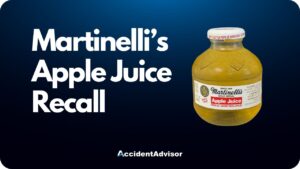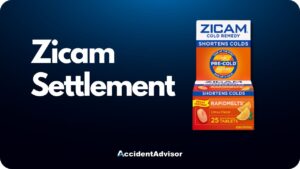The United States Marine Corps base known as Camp Lejeune is located in Jacksonville, North Carolina. It was discovered decades ago that the Camp Lejeune water supply had been contaminated with carcinogenic chemicals for as long as 30 years from roughly 1953 through the mid-80s. However, victims have only recently been able to get compensation.
The result of this contamination has led many service men and women as well as their families who lived on the base to be diagnosed with cancer, primarily leukemia. Recent discoveries have led to victims of the contamination receiving settlements for their conditions in an ongoing series of lawsuits against the federal government, totaling multiple billions of dollars so far.
The passing of the Honoring Our Pact Act of 2022 has brought new attention to the cases of the victims as well as new opportunities for compensation. Continue reading to learn about the circumstances at Camp Lejeune that led to so many illnesses as well as the current claims being settled for its victims in our Camp Lejeune water update.
Table of Contents
- What’s Wrong with the Water at Camp Lejeune?
- What Caused Camp Lejeune Water Contamination?
- Is Camp Lejeune Water Still Contaminated?
- Camp Lejeune Water Lawsuit
- Camp Lejeune Water Contamination Claims
- Camp Lejeune Water Diseases
- Camp Lejeune Water Contamination Settlement Amounts
- Who Can File a Camp Lejeune Water Contamination Lawsuit?
- How to File a Camp Lejeune Water Contamination Lawsuit?
- Summary
What’s Wrong with the Water at Camp Lejeune?
Camp Lejeune water has been discovered to contain hazardous chemicals that have been scientifically demonstrated to contribute to cancer development later in life. The water was sourced from wells, which were shut down in 1985. The chemicals detected included:
- Benzene
- TCE (trichloroethylene)
- PCE (perchloroethylene)
- Vinyl chloride
These chemicals were on-site due to their industrial uses. PCE, for instance, is a dry-cleaning solvent. Dozens of other chemicals have been discovered to be contributing factors in the Camp Lejeune water poisoning, with some toxins at concentrations 3400 times the accepted safety regulations.
It is estimated that of the base’s eight water treatment plants, only two were contaminated with unregulated industrial chemicals. However, this means that thousands of military personnel and family members from those barracks or temporary houses were exposed to the toxins in their drinking and bathing water.
What Caused Camp Lejeune Water Contamination?
There are several theories as to how the Camp Lejeune water was contaminated. Some have speculated that a nearby dry-cleaning company was improperly disposing of its chemical byproducts. Others believe that equipment cleaning units on-base were to blame since some of the compounds discovered in the water are used as grease removers in an industrial setting.
Still another theory suggests that underground storage containers at the base itself were leaking into the well, resulting in the Camp Lejeune water poisoning. Regardless of the cause, Grainger Laboratories was called in to test the water in 1982. They demonstrated that the water was contaminated with TCE and PCE. Despite the lab’s warnings, the water continued to be used at Camp Lejeune until 1985 when the wells were officially shut down by the Environmental Protection Agency’s Superfund.
Studies were conducted by the ATSDR (Agency for Toxic Substances and Disease Registry) in 1997, concluding that the contamination would not likely cause cancer. In 2009, however, it was demonstrated that this report neglected to test for benzene, which may have entered the water from a leaking fuel reserve.
The military’s failure to report, investigate, or correct the benzene contamination is a significant aspect of the ongoing Camp Lejeune settlements.
Is Camp Lejeune Water Still Contaminated?
Those looking for a Camp Lejeune water update should know that the base is still in operation, though the solvents stored near the camp’s wells have been disposed. The Camp Lejeune water contamination will not hurt any additional families. However, some sources estimate that as many as 500,000 people were exposed to Camp Lejeune water poisoning, including many in vitro.
Importantly, the base itself was not the only site affected by the Camp Lejeune water contamination. The housing areas at Tarawa Terrace, Paradise Point, Berkeley Manor, and Marine Corps Air Station New River were also impacted.
Unfortunately, a Camp Lejeune water update must also mention the Navy’s mischaracterization of the scandal, including their resistance to the implications of the National Academy of the Sciences National Research Council’s 2009 report.
Camp Lejeune Water Lawsuit
The EPA launched investigations into the Camp Lejeune water poisoning situation in 2005. By 2008, the United States Marine Corps was required by Congress to begin notifying former residents of the base about the situation.
The first instance of the government admitting liability for the Camp Lejeune water contamination was in 2010 when Paul Buckley was awarded full disability benefits after contracting an incurable hematopoietic tumor. However, there was one case before this, when Laura Jones sued the government over the contamination after living on the base with her husband.
In 2011, Joel Shriberg filed a suit after being diagnosed with breast cancer. 10 more lawsuits followed in 2011 in the Northern District of Georgia. However, due to the statute of limitations on such cases, the court’s ability to compensate the victims was restricted by the USMC’s lack of cooperation.
In 2022, Congress passed the Camp Lejeune Justice Act, which devoted $6.7 billion for settlements involving victims of water contamination at Camp Lejeune and extended the statute of limitations.
Camp Lejeune Water Contamination Claims
The symptoms of Camp Lejeune water contamination are numerous. Hundreds of thousands of people stayed there over the three decades of contamination. Different exposure to different people results in different symptoms.
However, many conditions have been linked in further studies to exposure to the compounds found in the water at Camp Lejeune. The most prominent diseases include bladder cancer, liver cancer, kidney cancer, adult leukemia, aplastic anemia, multiple myeloma, non-Hodgkin’s lymphoma, and Parkinson’s disease.
However, these are not the only conditions that have been reported. Other cancers such as breast, cervical, brain, lung, prostate, ovarian, and rectal have been reported.
Camp Lejeune Water Diseases
Below we break down each of the eight main diseases associated with the Camp Lejeune water poisoning.
- Adult leukemia – Leukemia is a cancer of the body’s tissues, often centering on an adult’s bone marrow and lymphatic system.
- Bladder cancer – Bladder cancer is more common in older adults and usually diagnosed early by its first symptom, which is blood in the victim’s urine.
- Liver cancer – Liver cancer usually doesn’t show symptoms until it reaches later stages when the signs include weight loss, vomiting, and abdominal pain.
- Kidney cancer – Cancer of the kidneys, commonly a renal cell carcinoma, is often revealed accidentally by body scans or by its eventual symptoms, including back pain, loss of appetite, and blood in the urine.
- Aplastic anemia – Aplastic anemia is a rare disease of the bone marrow that causes the body to stop producing blood, commonly caused by radiation treatment or toxic chemicals.
- Multiple myeloma – Multiple myeloma is cancer in white blood cells that can damage most of the body’s systems, including the immune system, bones, and kidneys.
- Non-Hodgkin’s lymphoma – This is a cancer of the lymphatic system, which affects a certain type of the body’s white blood cells, causing initial symptoms like swollen lymph nodes, fever, and chest pain.
- Parkinson’s disease – Parkinson’s disease affects the nervous system due to nerve cell damage, causing progressive tremors and stiffness.
Camp Lejeune Water Contamination Settlement Amounts
The Congressional Budget Office estimates that the payouts, including settlement amounts and legal expenses, for the Camp Lejeune water poisoning scandal will total around $6.7 billion.
However, there is no true average for each settlement amount and no way to guarantee that the full $6.7 billion will be accounted for. It’s too early in the settlement process to know what each victim will be compensated, though settlement amounts so far have been in the range of $500,000 to $1,000,000.
Keep watching for the latest Camp Lejeune water updates to learn more about the settlements as they develop.
Who Can File a Camp Lejeune Water Contamination Lawsuit?
There are several filing requirements for a Camp Lejeune water contamination lawsuit. Only those who resided at Camp Lejeune or its affected housing developments from August 1, 1953 to December 31, 1987 can file. They must have been exposed to the drinking water for at least 30 days.
The eligible group includes veterans, the family members of those veterans, as well as civilian workers who lived or worked at Camp Lejeune. The Camp Lejeune Justice Act established a statute of limitations of two years from its 2022 signing date for victims to file claims, meaning victims must begin the settlement process before August 10, 2024.
How to File a Camp Lejeune Water Contamination Lawsuit?
If a person qualifies for a Camp Lejeune water contamination lawsuit, they must first exhaust all administrative remedies. This means that victims must give the military the chance to compensate them before filing a claim.
The process of filing begins with gathering the needed documentation, including medical reports, proof of service and residence, and any evidence of relative damages both physical and emotional to the person making their case. From there, the military may offer a settlement or reject your claim.
Your attorneys will handle it for you from there, either by negotiating your claim with the adjusters or preparing your lawsuit.
Summary
Since the initial EPA reports, the contamination of the drinking water at Camp Lejeune has been shuffled, underreported, and misunderstood. The relevant authorities downplayed the dangers of the unregulated industrial chemicals present and failed to initiate positive action quickly once they were discovered.
For those who lived within the 30-year timeframe of contamination at Camp Lejeune or the housing projects that used the same water supply, the government recently passed the Camp Lejeune Justice Act of 2022. This act provides two years for those impacted by the contaminated water to seek restitution. The bill provides $6.7 billion to settle these cases.
The process of filing for compensation requires medical documentation and proof of service or residency. Though the cases have not been active for long enough to demonstrate a clear average settlement amount, those who seek compensation with a relevant diagnosis can make a successful case for themselves or their family. This includes residents who were children or even unborn at the time of the contamination.
Contact an experienced personal injury attorney to learn whether you qualify for a Camp Lejeune water contamination settlement and how you can begin the process of being compensated for your injuries.

Rocky Horton
Author
Rocky Horton is a health and safety expert from Chapel Hill, NC. He is the founder of AccidentAdvisor and has been featured in Forbes, Bloomberg, and other publications. Learn more.













